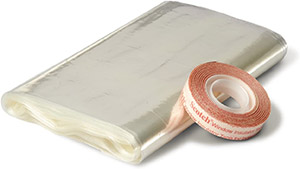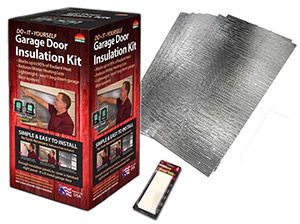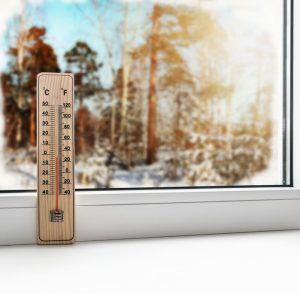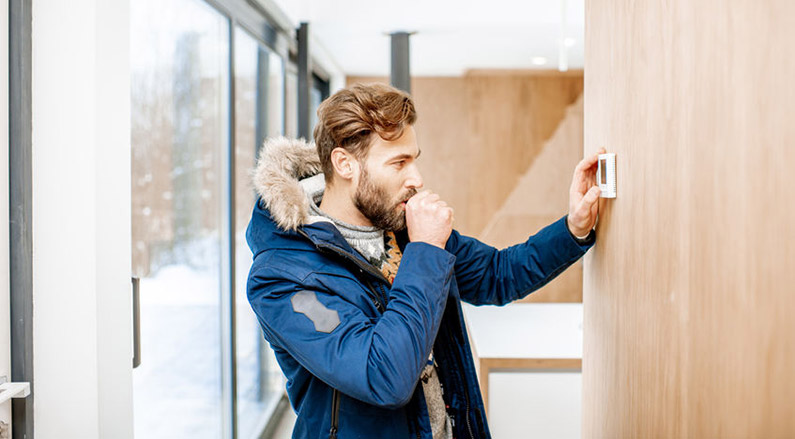It’s an overused saying now, but winter is coming! You should be prepared for when the cold weather hits by keeping the outside air flowing through your old windows to a minimum and keeping as much warmth inside as possible.
Let’s face it, the best option to solve the problem of old drafty windows is brand new, well-sealed, and insulated windows. Newer windows will keep the cold out much better than their ancient counterparts. However, new windows can be incredibly expensive or downright unaffordable for some people, especially if you’re on a tight budget.
New windows will save money on heating bills, but unfortunately, the energy savings will probably take an extremely long time to come anywhere near covering the expense.
So here are some quick, low-cost tips and ideas to keep your home warmer this winter.
The Obvious
Make sure your windows are closed all the way and tight. Many times windows will be “closed” but not snugged right up against the edge, which can create a small gap in the seal. This can occur both to the outside walls and where the windows meet in the middle depending on your window type. So ensure all windows are closed up tightly.
If you have larger windows that get sun during the day, you can gain an incredible amount of heat simply by ensuring those windows aren’t covered with blinds or curtains and are allowing the sunlight to shine through to the inside. Use natural heat to your advantage and keep blinds or curtains open on those windows during the daytime if it’s sunny out!
On cold and cloudy days, heavy material curtains can help to insulate and keep heat inside your home as well as slow it from escaping out against the same cold windows. Generally the thicker the better in order to retain heat. You can even find curtains specially made with thermal lining.
Fix Old Caulking

Take old caulking off carefully so you don’t scratch your windows. You can use a plastic scraper or very carefully cut the edge of old caulking with a utility knife. Clean and dry the areas afterwards, you want a nice clean surface to apply the new product. Applying new caulking doesn’t cost much at all, but can help seal up your old windows from cold drafts.
Shrink Film / Plastic

Simply place the tape around the inside frame of your window or along the trim (or outside of the trim) and then lay the plastic tight over top. Once stuck across the window, use a hairdryer or heat gun to carefully shrink the plastic so it’s tight. It’s usually easier with two people, one to hold the wrap tight for you.
Pros
These kits aren’t the cheapest, given what they include (a 3 window kit – average size windows for about $20), but they aren’t going to break the bank either and are affordable for the added comfort. According to my infrared thermometer, I’ve found that these tend to raise the temperature about 2-3 degrees °F. Assuming you leave any blinds open, they will also still allow light to filter through your window, which may be helpful if you get lots of sun.
Cons
The plastic is one use only and generally a bit of a hassle to put on. It also doesn’t always sit flat or shrink perfectly, if you aren’t very careful with it or have a second set of hands. I’d recommend a helper for this job to hold the plastic tight. I’ve also noticed the tape never tends to come off easily or will even pull paint with it sometimes if you’re not careful. The temperature difference or ‘feel’ of the room is not necessarily that noticeable.
Garage Door Insulation Kits

Pros
These kits are really easy to place loose or tape inside a cold window. You can remove them at any time and re-use them, unlike the shrink wrap. The initial cost can be more expensive but was actually cheaper in my case finding some unused rolls on Kijiji. I acquired an entire two-car garage-sized roll for only $15, which did about 8-10 windows. While the price is likely more than shrink-wrap if purchasing new, keep in mind you can use them over and over again each season.
The temperature difference when testing with an infrared thermometer was about 5°F better than the shrink wrap and 8-9°F higher than with no insulation! Clearly, they work and I think are good value for the money.
Cons
The major downside is that insulation material isn’t transparent and will block light out of your window, will block your view outside, and from the exterior can look just plain ugly. For my purposes, the insulation kit was used on windows that did not get a lot of sun or windows we never open or use in the winter anyway and aren’t seen often from outside. For example, you might use it on a basement window, or perhaps a baby’s room where you are blocking light out anyway and just want to keep temperatures warmer.
If this is the case and you have no plans of opening the window during the winter, you could try what I did and add shrink film over the insulation for even more warmth.
Fibreglass / Batt Insulation – Not Recommended
At this point some people may be thinking, if you’re covering the entire window why not just use regular batt insulation? Well that did cross my mind, but some quick research has suggested that 1) it is not healthy to have the open fibreglass inside your house and 2) it can create moisture problems when right up against a window, where cold air meets the warm insulation.
While it may provide superior R-value and insulating properties, batt insulation should stay inside walls where it belongs.
Conclusions

My own experience and testing confirm that the garage insulation yields better results and is easier to apply and remove. The only downside is obviously your visibility (or lack of) and how much light gets let into these windows.
Both methods have resulted in a warmer house and less heat loss during the cold season. This also translates to less furnace activity, less energy consumption and cheaper heating bills. Most importantly it results in a warmer, cozier home!
Hopefully, this will help you stay warm and more importantly save some money on your winter energy bills.




